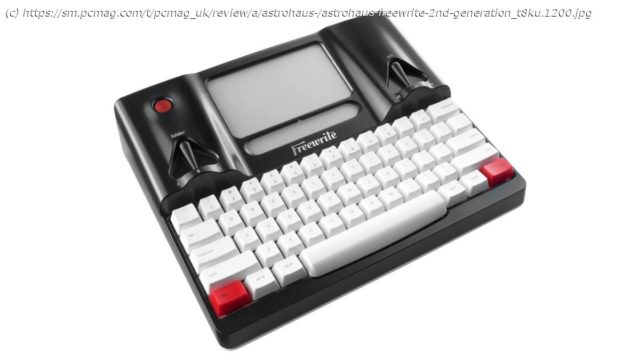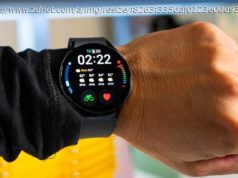Write distraction-free, anywhere, on a superior keyboard
Like to write away from your usual desk? Also a bit of a mechanical keyboard snob? Those two characteristics don’t mesh well. When you’re typing on the go, you generally need to use a laptop (most have mediocre keyboards) or a tablet with a wireless keyboard (not ideal). A good mechanical keyboard you can take anywhere is rare—and who’s willing to set up a full workstation in a coffee shop? The Astrohaus Freewrite ($599) looks, at a glance, like an ideal solution to that problem. It’s a writing device that uses a mechanical keyboard and a little E Ink display to let you type comfortably anywhere you go. The Freewrite is designed to encourage focused writing, forcing you to concentrate only on what you’re typing without any distractions. That’s unlike a laptop filled with non-writing software, easy web access, and countless avenues and notifications to grab your attention. We’ve already looked at the Freewrite Traveler, Astrohaus‘ even-more-portable version with a clamshell design and a flatter keyboard. The bigger Freewrite is more expensive, but its full-size mechanical keyboard and aluminum body (along with its typewriter-like profile, if you like the aesthetic) justify the premium. With that in mind, it’s very much a single-purpose device, and that can make its price seem exorbitant unless it’s exactly what you’re looking for. A Digital Typewriter to Go The Freewrite looks very much like an electric typewriter, except much slimmer, and with an E Ink screen where the paper carriage would be. The screen actually has two parts: a 4.8-by-2.7-inch rectangle that serves as the writing area, and a smaller 4.5-by-0.7-inch readout bar below. The latter shows status information such as the date, your associated email address, and current working folder. (More about those in a minute.) Large, triangular, three-way switches sit on either side of the display. The left switch selects whether you’re working in folder A, B, or C, while the right switch sets Wi-Fi to On, Off, or New (the last to configure a new network). A red button sits on the top left corner of the Freewrite, controlling power and wake-up. That’s the upper half of the top of the Freewrite. The lower half is a mechanical QWERTY keyboard with full-size keys in a 60% layout. This means a full set of letters and a row of numbers and special characters, but no number pad or special buttons. The keyboard doesn’t even have arrow keys for controlling the cursor. This is as close to a typewriter as you can get. The keys are all white, except for two red New keys where the Ctrl keys would be on a PC keyboard. These keys start new documents in the current folder. The Freewrite’s shell consists of a black aluminum chassis on the top, framing the screens and keyboard, and a hard white plastic bottom panel with four rubber feet for keeping it in place on a desk or table. The back panel of the Freewrite features a swing-out plastic handle for carrying it like a briefcase, and a USB Type-C port for charging. According to Astrohaus, the Freewrite can last for weeks on a charge. This seems very likely, considering how the E Ink screen (like that of an e-book reader, such as an Amazon Kindle) consumes very little power. The device is especially power-sipping if you enable Wi-Fi only when you want to sync or send your drafts (which, mind you, isn’t feasible if you’re typing on the go).






